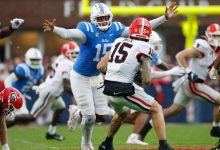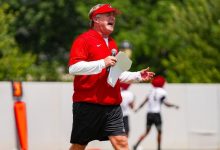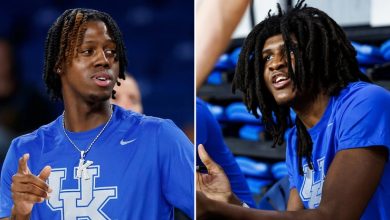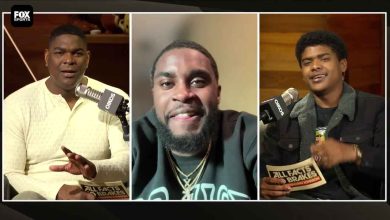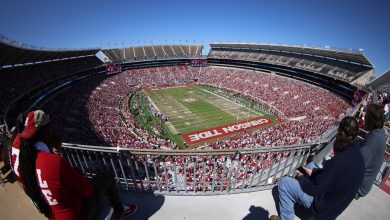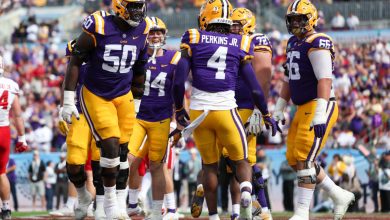The Colts should consider trading Anthony Richardson due to his accuracy struggles, durability concerns, and the arrival of Daniel Jones increasing quarterback competition.

The Indianapolis Colts find themselves at a pivotal crossroads regarding their quarterback situation. After investing significant draft capital and faith in Anthony Richardson, the promising young signal-caller, the team is now confronting tough questions about his long-term viability as their franchise quarterback. Coupled with the recent acquisition of Daniel Jones — a seasoned veteran quarterback — the Colts’ depth chart is suddenly crowded and competitive. For many analysts and fans, the question arises: should the Colts consider trading Anthony Richardson?
While Richardson’s raw talent and physical upside remain undeniable, several pressing issues cannot be ignored: persistent accuracy struggles, ongoing durability concerns, and the presence of Daniel Jones as a capable alternative. This article delves into these key factors and argues why trading Richardson could be a pragmatic and strategic decision for the Colts moving forward.
Anthony Richardson: A Profile of Potential and Concerns
When the Colts selected Anthony Richardson with the fourth overall pick in the 2023 NFL Draft, expectations were sky-high. At 6’4” with an impressive arm strength and elite athleticism, Richardson was viewed as a dual-threat quarterback who could reshape the Colts’ offense for years to come. His ability to extend plays with his legs and make difficult throws on the run made him a tantalizing prospect.
However, as the early months of his professional career unfolded, a few troubling trends emerged.
Accuracy Issues
Perhaps the most glaring problem Richardson has faced is inconsistent accuracy. Despite his physical gifts, his completion percentage has been underwhelming relative to other quarterbacks taken in his draft class. Coaches and analysts noted that Richardson frequently missed open receivers, struggled with ball placement, and sometimes threw passes behind his targets.
In the NFL, accuracy is paramount, especially in timing-based offenses. Even the best athletes can struggle if they cannot consistently deliver the football where it needs to be. Richardson’s difficulty hitting intermediate routes and tight windows has often stalled drives and forced the Colts into unfavorable situations.
The Colts’ offensive coordinator has reportedly spent extra time working with Richardson on mechanics and decision-making, but progress has been slow. In the meantime, opposing defenses have capitalized on these inconsistencies, applying pressure and forcing turnovers.
Durability Concerns
Another significant red flag for the Colts is Richardson’s durability. While his athleticism is a major asset, it also exposes him to more hits and potential injuries. His playing style involves a lot of scrambling and extending plays outside the pocket, which, while effective, increases physical risk.
During his rookie season and subsequent minicamps, Richardson has dealt with several minor injuries and nagging ailments that raised eyebrows among team doctors and staff. The concern is not just whether Richardson can stay on the field, but whether his style of play can hold up through the grind of a full NFL season.
Durability is especially critical for a franchise quarterback. Teams need a reliable starter who can take every snap in a 17-game regular season plus playoffs. Richardson’s injury history and playing style suggest a higher injury risk, potentially limiting his availability or effectiveness down the line.
The Arrival of Daniel Jones: A Game-Changer for the Colts
In an unexpected but strategic move, the Colts acquired veteran quarterback Daniel Jones in the 2025 offseason. Jones arrives as a proven starter with a solid track record in the NFL. Though not a superstar, he offers stability, experience, and a skill set that complements the Colts’ offensive weapons.
Jones’ arrival changes the calculus entirely. For a team that has invested heavily in Richardson’s potential, adding a veteran competitor signals a possible shift in priorities.
What Daniel Jones Brings
Daniel Jones is known for his poise under pressure, ability to read defenses, and improved accuracy since his early years in the league. He is also durable relative to his rushing ability and has demonstrated the capacity to lead an NFL offense effectively.
Jones’ presence provides the Colts with a low-risk, high-reward option to stabilize the quarterback position while the team evaluates Richardson’s future. It also creates healthy competition in training camp and preseason, which can only benefit the team.
Why Trading Anthony Richardson Makes Sense
Given these factors — accuracy struggles, injury risk, and a new veteran quarterback — trading Richardson could be a prudent move for several reasons:
1. Maximizing Trade Value
Despite the concerns, Richardson remains a young quarterback with immense physical tools. Many teams looking to rebuild or develop a franchise signal-caller may see him as a high-upside asset worth acquiring.
By trading Richardson now, the Colts can capitalize on his draft pedigree and potential, possibly securing valuable draft picks, players, or cap space. Waiting longer could decrease his value if his accuracy and durability issues persist or worsen.
2. Clear Quarterback Hierarchy
NFL success often hinges on clarity at the quarterback position. When a team has uncertainty or ambiguity, it trickles down to the entire offense. Trading Richardson would allow the Colts to establish Daniel Jones as their unquestioned starter, fostering leadership and continuity.
This clear pecking order would also reduce distractions and internal competition that might disrupt locker room chemistry.
3. Financial Flexibility and Roster Building
Trading Richardson could provide the Colts with financial flexibility. Rookie contracts, especially for top draft picks, carry significant salary cap implications. Moving Richardson might free up cap space to invest in key offensive weapons, offensive line improvements, or defensive upgrades.
In the highly competitive AFC South, the Colts need to build a balanced roster around their quarterback to remain playoff contenders.
4. Allowing Richardson to Develop Elsewhere
A trade wouldn’t necessarily mean the end of Richardson’s NFL career — quite the opposite. A change of scenery could provide Richardson the chance to develop in a different offensive system better suited to his skills, with less pressure and a longer leash.
Some teams prefer to develop athletic quarterbacks slowly, gradually integrating them as starters. Richardson could benefit from this approach elsewhere, maximizing his eventual NFL impact.
Potential Risks of Trading Richardson
Of course, trading Richardson is not without risks.
- If Jones underperforms, the Colts may find themselves regretting the move and scrambling for quarterback solutions.
- Richardson could flourish elsewhere, becoming a star and making the Colts look short-sighted.
- Fan backlash is possible, especially from supporters who were excited about Richardson’s potential.
Nonetheless, with careful evaluation and clear communication, these risks can be mitigated.
Alternatives: Keeping Richardson and Competing
The Colts could also choose to keep both quarterbacks and let competition decide the starter. However, this approach comes with drawbacks:
- It may create uncertainty and tension.
- It could stunt Richardson’s development if he only plays sporadically.
- It complicates roster and salary cap management.
Some teams have successfully managed quarterback competitions, but clarity usually emerges by midseason. The Colts would need to be prepared for the implications.
What Other Teams Might Want Richardson?
Teams with young offenses or rebuilding timelines could find Richardson attractive. Some franchises:
- Need a developmental quarterback with athletic upside.
- Can afford to be patient with a raw talent.
- Are in less immediate playoff contention, giving Richardson time to grow.
These teams could offer valuable draft capital or complementary players in return.
A Tough but Strategic Decision
Anthony Richardson’s potential is undeniable, but his immediate challenges are significant. Coupled with the arrival of Daniel Jones — a more proven and stable quarterback — the Colts are in a unique position to make a strategic choice that balances short-term competitiveness with long-term growth.
Trading Richardson would provide clarity, maximize asset value, and allow the team to build around a quarterback ready to lead now. Meanwhile, it would give Richardson a fresh start where his talents might flourish.
The NFL is a league that rewards tough decisions. For the Colts, moving on from Richardson might be the bold

